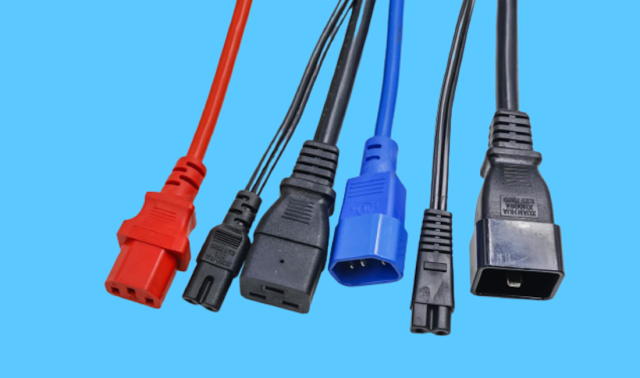Extending Your Reach: Choosing the Right Length for Your Power Cord
Are you sick of having to continuously rearrange your desk to make room for a power cord that is too short? Or perhaps you're annoyed by the mess that extremely long cords that tangle and trip you up create.
Finding the ideal length for your power cord can drastically improve organization, safety, and productivity. We'll look at how to pick the ideal length in this post so you can increase your reach without any bother or problems!
Lengths of Standard Power Cords
Standard power cords have different lengths depending on the product and application. According to, the length of a power cord can range from 6.6 to 32.8 ft (2 to 10 m) depending on the standards used in manufacturing the cord.
However, for mobile homes, there are strict measurement guidelines. The length of the cord must not be less than 6 meters (20 ft) where the length is measured between the face of the point of the attachment plug cap and the point where the cord enters the premises. Tripp Lite's standard computer power cord model P010-012 has a length of 12 ft.
What Length of Cable Should You Opt For?
Depending on your unique use case and requirements, the appropriate cable length will vary. When determining the length of a power cord, keep the following things in mind:
Distance Between the Device and the Power Source
Take a measurement between the device you want to connect to and the power outlet or power distribution unit (PDU). Choose a cable length that comfortably spans this distance without putting too much tension or slack in the cable.
Cable Management
In order to keep your office or information middle flawless and composed, take into consideration your cable administration needs. While selecting a cable that's as well brief can put a push on the connectors or confine where the devices can be put, choosing a cable that's as well long can result in tangled wires and clutter.
Flexibility and Future Changes
If you foresee reorganising your workspace or data centre in the future, a somewhat longer connection may provide more freedom in altering the layout. However, avoid going too far because this could cause problems with cable management.
Cost and Availability
The length of the cable may have an impact on both. In comparison to custom or longer lengths, common lengths like 1 metre, 2 metres, or 3 metres are frequently more easily accessible and may be more affordable.
Understanding IEC C13 and C15 Power Cords
Here is a quick summary of the variations and applications of C13 and C15 power cords:
IEC C13 Power Cord
The most typical power cable used to connect electronic gadgets to a power source is the C13 power cord. It has a male plug on one end that connects to the power outlet or power distribution unit (PDU) and a female IEC 60320 C13 connector on the other end that plugs into the device. Computers, servers, monitors, printers, and other equipment with a standard power consumption frequently use C13 power cords.
IEC C15 Power Cords
The C15 power cord is comparable to the C13, except it is made for use with things that operate best in high-temperature settings. Similar to the C13 power cable, it has a male plug on one end and a female IEC 60320 C15 connection on the other.
The C15 connector's small top-notch, which prevents it from being placed into a C14 inlet with a lower operating temperature, is the primary distinction. This design makes sure that high-temperature gadgets are only plugged into power lines that can withstand the required temperatures. Devices like network switches, servers, and power distribution units (PDUs) that produce a lot of heat or are utilized in hot conditions frequently employ C15 power cords.
Difference Between C13 and C15 in Terms of Length
Instead of length, the main distinction between C13 and C15 power cords is in the type of connector and temperature rating. Depending on the producer and particular use case, power cords for C13 and C15 can be any length.
These two varieties of cords are not distinguished by length. C15 and C13 cords are available in a variety of lengths, including 1 metre, 2 metres, 3 metres, and even longer. Your unique needs, such as the distance between the device and the power source or power distribution unit (PDU), will determine the length of the cord you select.
It is significant to put compatibility and temperature determinations into consideration at some point in the recent past when choosing a control line. Once you've distinguished the correct connector type, you'll be able to select the correct length based on your special necessities.
Conclusion
You'll increase your comfort and expand your reach with the correct length power cord. It's vital to select a control cord that's reasonable for the task at hand. Within the conclusion, select the length that best suits your prerequisites to ensure you can boost the utilise of your contraptions wherever you'll utilise them. Content Source: https://sfcable4seo.wixsite.com/sfcable/single-post/extending-your-reach-choosing-the-right-length-for-your-power-cord




Comments
Post a Comment